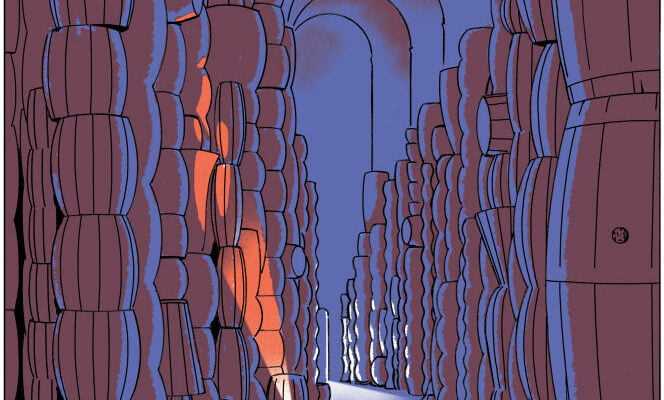1. Wine is best aged in oak barrels
This is as false as the reverse: “Aging in barrels is useless make-up. Aging in oak barrels is neither good nor bad in itself. It plays a role in the structure and taste of the wine. If you appreciate the aromas of vanilla, coconut, toast, praline, caramel, wood fire… as well as a round and velvety structure, then you will enjoy a wine with an assertive woodiness. If you prefer expressive fruit dominants, juicy, lively wines with little tannins, then neutral containers, such as stainless steel or concrete tanks, will appeal more to your palate. But, above all, beyond the taste specific to each, certain powerful wines, with solid tannins, will need aging “under wood”, in order to acquire a patina and polish themselves, like a polite child. we say “well brought up”. While others, lighter, will suffer from a passage in barrel which could dominate, even crush their aromas and their fine structure. As a connoisseur, we will rather say that aging in barrels is appropriate or not for a wine, that it is more or less well dosed, that the wine has been able to “integrate the wood” or that, on the contrary, it is dominated.
2. The oak barrel is only for red wines
The world of wine would then be very boring. Burgundy white wines are mostly aged in barrels, as are some Bordeaux whites in Graves and Pessac-Léognan. Because, instead of being watertight, the wood has air porosity which allows micro-oxygenation of the wine. This slow action, which can last from six to thirty-six months depending on the appellations and the cuvées, gives fatness, fullness, richness and a wider sensation in the mouth. For the same reasons, sweet wines also pass through barrels. Just like the yellow wines, thus being able to develop their so particular veil of yeast. Even great cuvées of champagne can pass through wood.
3. All barrels are equal
If this were the case, the oaks of the Tronçais forest would not be adored by French and foreign winegrowers. The oak grove of Tronçais, in the north-west of Allier, is the flagship reference for barrels, in addition to being one of the most beautiful in Europe. But there are some twenty-five remarkable oak groves in France, such as those of Bercé, in Sarthe, Saint-Palais, in Cher, Bertranges, in Nièvre, Darney, in Vosges. The origin of the oak is not the only criterion. Nor his age. It takes the know-how of the lumber buyer and the stave cutter to create the best boards from which the best barrels are made. Then comes the decisive role of the cooper. The demanding winegrowers are very picky about the choice of the latter and compose their cellar with care, varying the productions. Indeed, the “heating” of the wood, during the manufacture of the barrel, will have an extremely important impact on the wine. Depending on whether it is weak, medium or strong, it can deliver new aromatic compounds. And the more intense the burn, the more the wine will capture toasted and caramelized notes. The quality of the oak and the level of toasting also have an influence on the tannins, it can make them more drying, just as it can refine the grain. Finally, it is rare, but there are barrels made of acacia wood, which have a more delicate action on the wines, and others made of chestnut wood, which, conversely, will be more typical, bringing more of tannins.
You have 30.25% of this article left to read. The following is for subscribers only.
